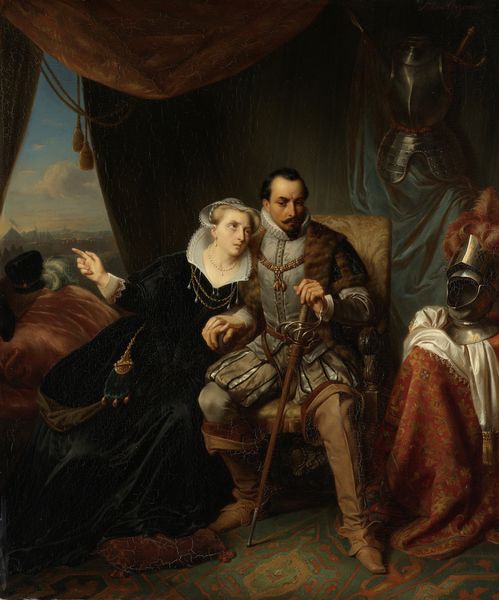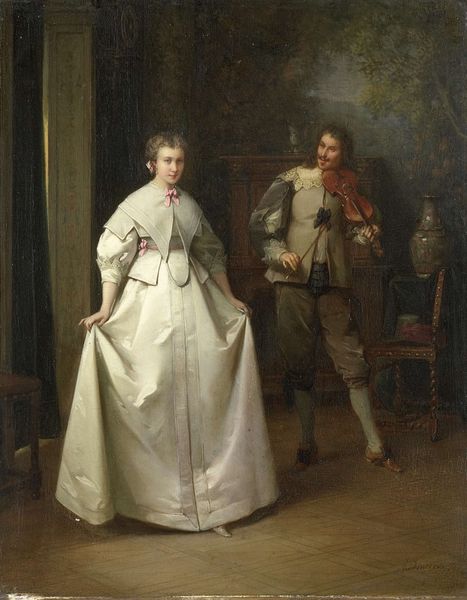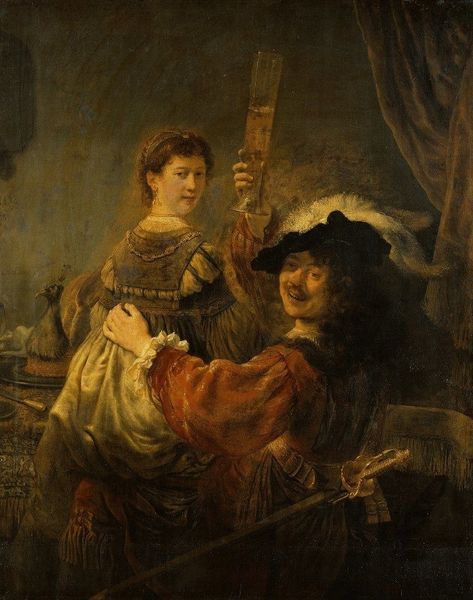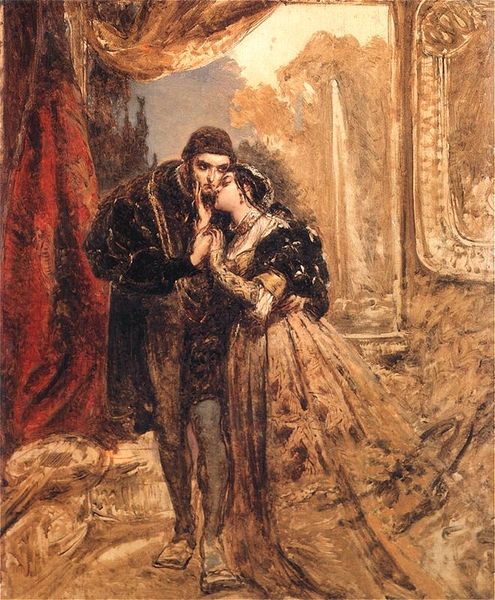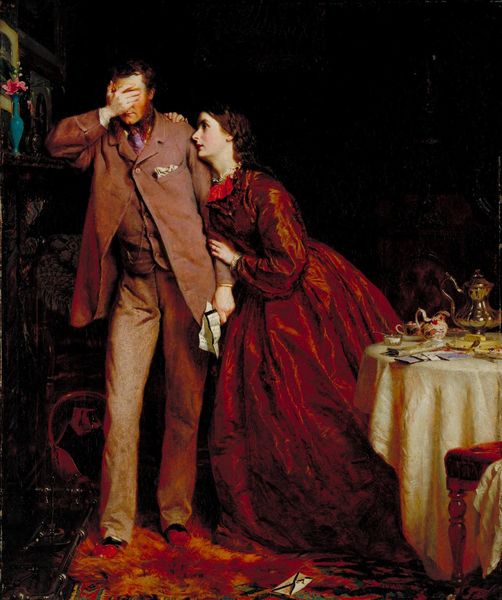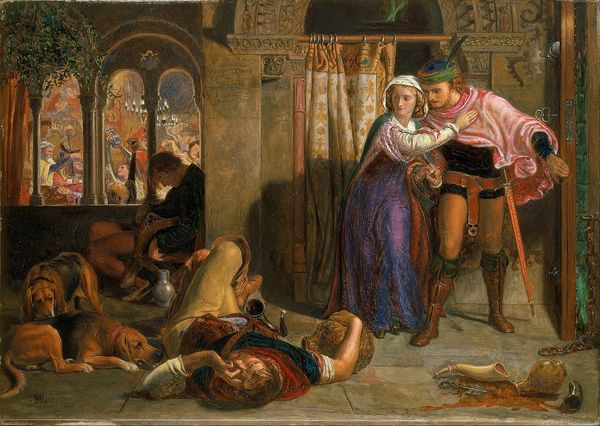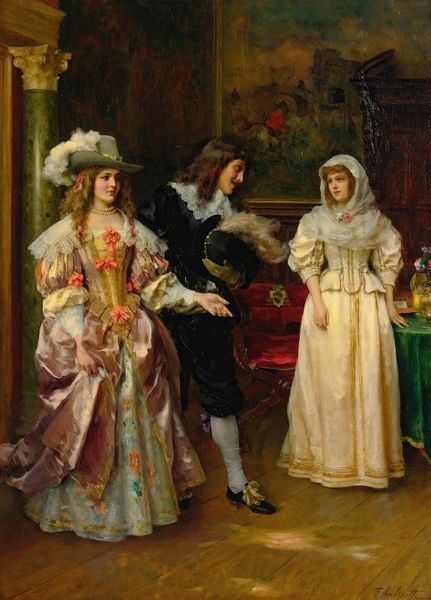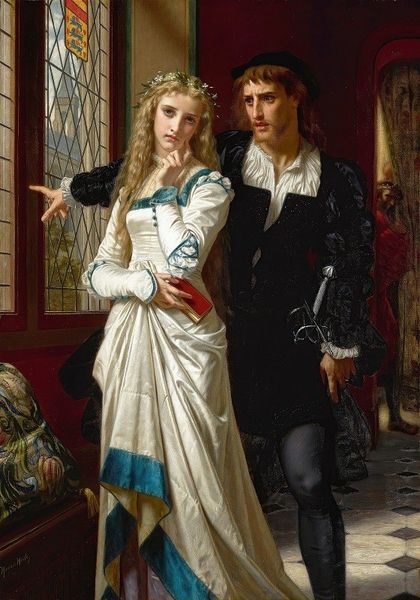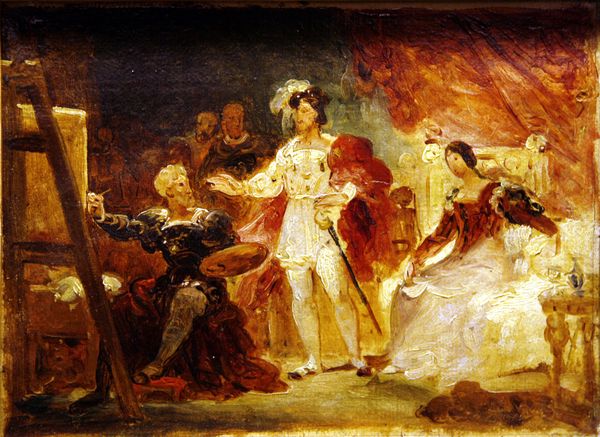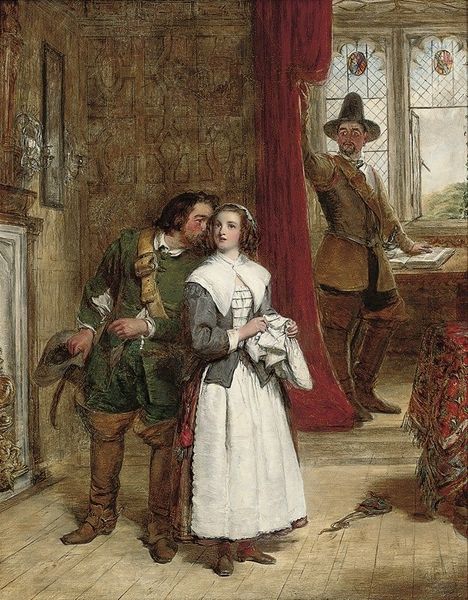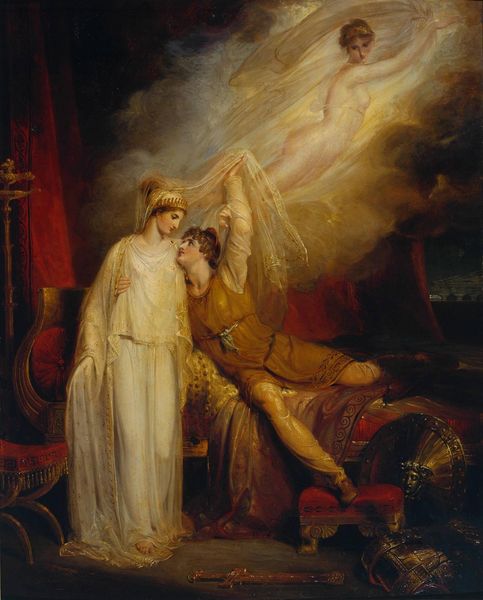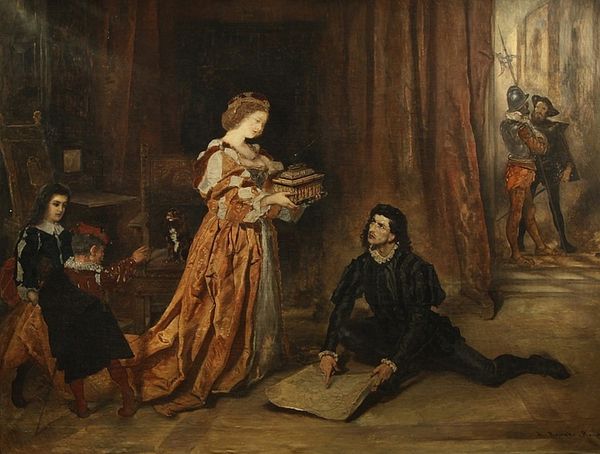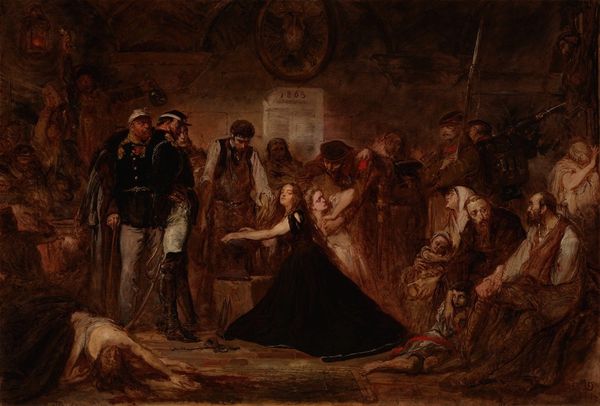
Copyright: Public domain
Curator: Editor: We're looking at "Oh Liberté! Que De Crimes on Commet En Ton Nom!" a detail from a painting by Laslett John Pott, created in 1874 using oil paint. I'm immediately struck by the contrast – the central figures, seemingly well-off, set against a backdrop of turmoil and distress. What jumps out at you? Curator: It's intriguing, isn't it? I see the rough, visible brushstrokes, especially in the lower figures. Pott clearly emphasizes the materiality of the oil paint itself, not just representing forms. It suggests a particular kind of… labor. Think about what that means. How does the act of applying paint to canvas itself become a statement? Editor: Are you suggesting that the very act of painting in this style connects the artist, and us, to the suffering depicted? It is, I believe, intended as a romantic painting about French revolution Curator: Exactly. This isn't just about representing a historical event; it’s about the social context of making art about the event. Consider the labor involved - mixing paints, stretching canvas - versus the idealized "liberty" portrayed. Do you see a tension arising between the high art representation and the implied craftsmanship beneath the surface? Editor: I see that now. And it makes me wonder about the intended audience. Were they meant to contemplate this tension between liberty and the means of its depiction? Curator: Precisely! It asks us to consider not just what's depicted, but the entire system that allows for its creation and consumption. How does Pott, through his materials and technique, implicate the viewer in this complex web? Editor: So, by focusing on the physical process, we're drawn to consider not just the 'what' but also the 'how' and the 'why' of art production, which definitely opens up the discussion beyond the surface narrative. Thanks! Curator: It challenges the romantic idealism, bringing in a material and production perspective. Something to think about as you examine more art.
Comments
No comments
Be the first to comment and join the conversation on the ultimate creative platform.
